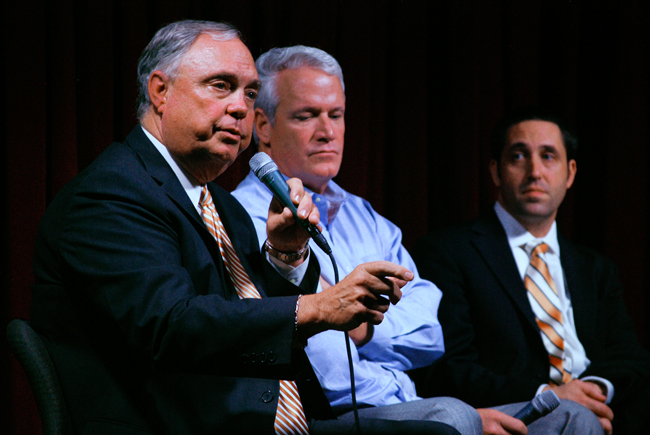A panel of state legislators presented ideas and proposals for solving Texas’ water shortage at the Cactus Cafe on Monday.
Sen. Glenn Hegar, R-Katy; Rep. Drew Darby, R-San Angelo; and Rep. Lyle Larson, R-San Antonio, emphasized that more than 90 percent of the state is in some level of drought right now, and the reservoir levels of West Texas are low.
The panel members agreed that focusing on funding a water plan is the first step in preventing what could become a statewide water shortage.
“That doesn’t mean that, from a state perspective, we as taxpayers have to fund all of that,” Hegar said. “But we as state taxpayers have to put some dollars into it to begin to get partway down that road.”
Larson said the plan will prioritize regions affected most by drought by analyzing data collected over the past decade. He said there also needs to be a local effort.
“The other part is that we want to make sure that the areas that will be using this money are maximizing their conservation efforts,” Larson said. “There is a huge amount of water we can save, but the state needs to facilitate some of this.”
Darby mentioned how communities need to overcome the psychological aspect of thinking that water is plentiful, particularly in Texas.
“If you look at the surface water in the state of Texas now, 65 percent of the capacity of our surface water was the projects that were built in response to the 1950s drought,” Larson said. “If you look at the industrial base and population now, we’re using four times more water than we were then.”
Hegar said the city administrator of his hometown of Katy distributed voluntary restriction requests on water use and it wasn’t enough to promote conservation.
“It’s almost ironic that the time you need to conserve the most is also the biggest revenue generator,” Hegar said.
Darby said certain restrictions on watering communities should be enforced.
“We need to be OK with our lawns being something less than green,” Darby said. “The new green is brown. That’s really the vernacular we could all use. Brown is cool.”





















